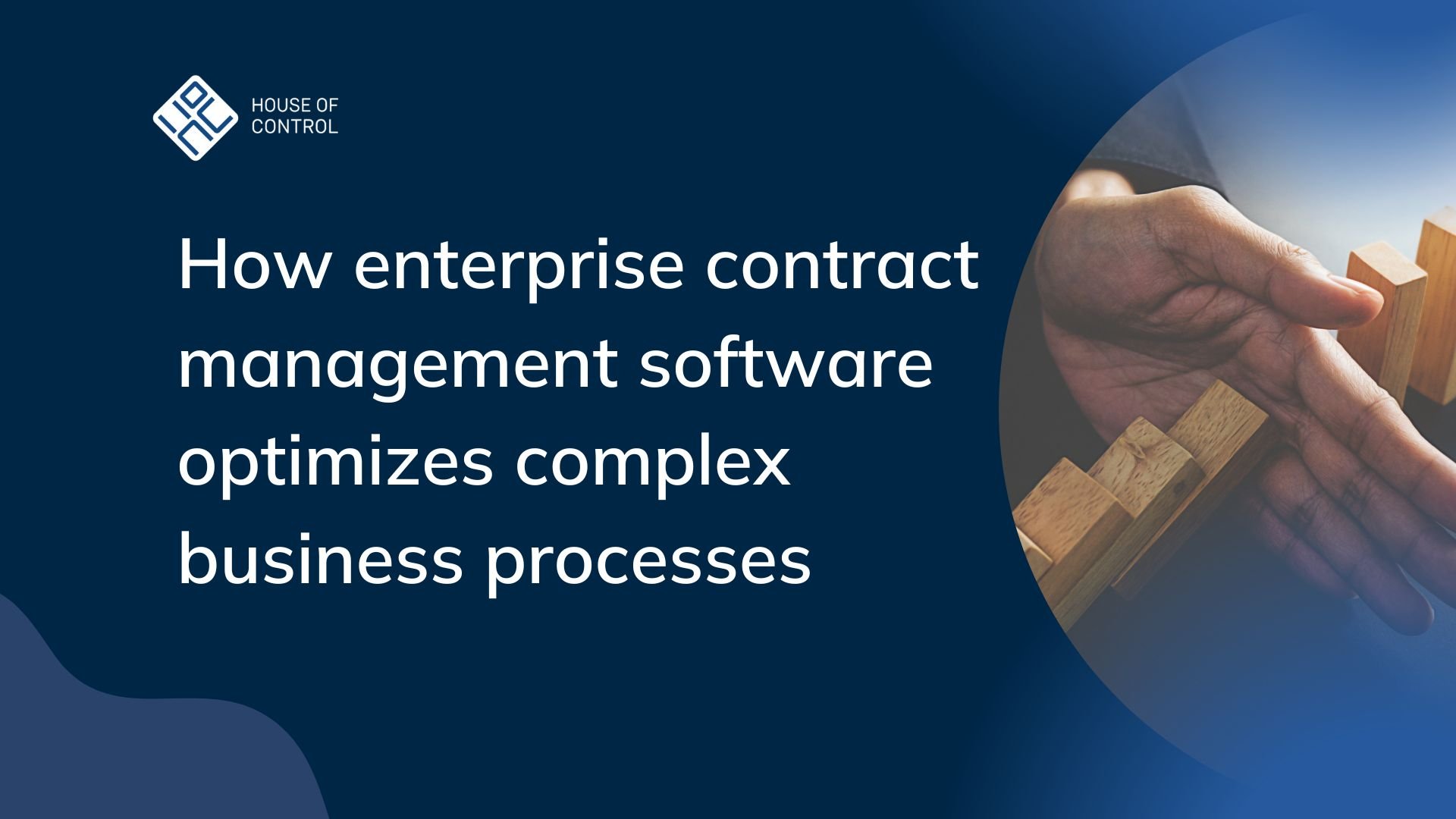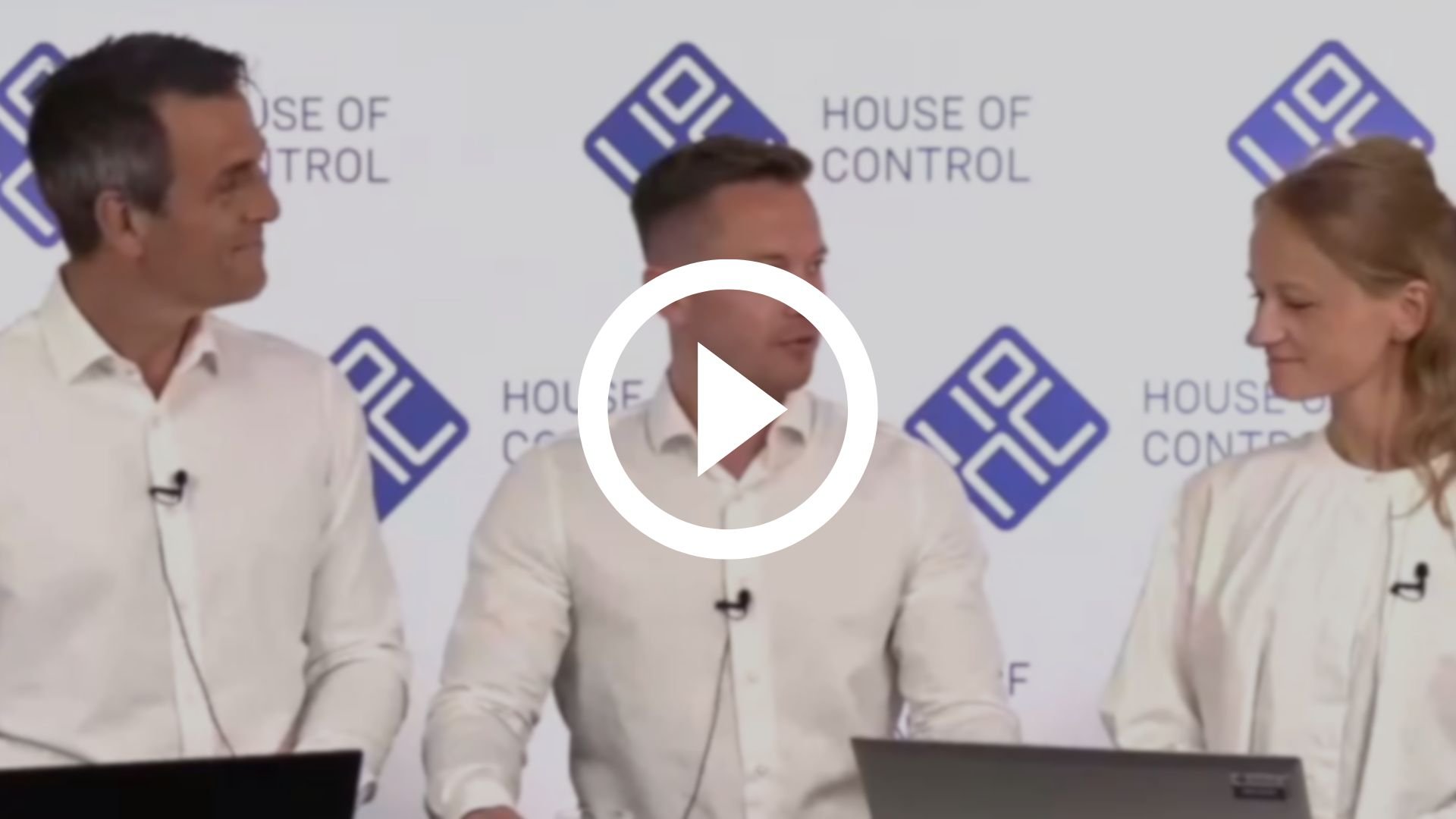Webinar recap: These are the 6 steps of contract management best practice
Something we have never done before: Share our customers’ secret recipe for contract management success. Plus, why bother with contract management, and what role should technology play?

How to set up a routine for best practice contract management? That was the question and challenge Farahat Hassan and Karoline Rønsdal, both Customer Success Managers at House of Control, took on during a recent webinar.
Every day, the two help some of our 1,600+ customers improve contract management using the Complete Control software. They brought their customer stories and extensive experience to the webinar.
This article sums up what Farahat and Karoline believe is best practice, based both on their contract management skills and what they have seen our most innovative customers do. The webinar had three sections:
- Why is it important to have control of contracts?
- How do you go about creating a routine to ensure control and reduce costs? - We have gathered this routine in 6 simple steps
- What role does technology play in the contract management process?
Why is it important to have control of contracts?
One of House of Control’s customers recently merged with three other companies, and wanted to operate as “one” as soon as possible. They had a lot of different ongoing agreements with different vendors, like insurance and purchase agreements. However, with a clear overview of how many and with whom, they managed to make joint agreements within one quarter, that also took into account the different deadlines.
Did you know that poor contract management costs businesses on average 9 percent of the bottom line? And the larger your company is, the worse it gets. For larger companies, it can cost up to 15 percent of the bottom line.
Moreover, according to Procurement tactics (2024) 90 percent of employees who are responsible for managing contracts say it's a challenge to find the specific documents they need, thus spending unnecessary time looking for them.
Contracts are also legally binding, and complying with the agreed terms is important for business reputation, but of course also have an impact on the business financials. However, 71 percent of companies cannot find every tenth contract.
Staying in control of all contracts is important to make sure that both parties are operating in compliance with the contract, to have a clear overview of current and future costs and obligations, and to make sure that you don't spend money on services you don’t need.
How do you go about creating a routine to ensure control and reduce costs? - We have gathered this routine in 6 simple steps
- Get an overview of all your contracts
What are they, where are they, and who is responsible? To achieve this, map out what contract types you have and how many there are of each type. You may have to check with the various departments several times or organise a project group to simplify the process.
Another good place to start is the accounting department. They should have control over all invoices going in and out of the company. What is recurring and who are our active vendors and customers? If you cannot find the agreement, contact your vendor
- Collect all contracts in one place
Once you have an overview of contract types, begin to gather them in one place. Make it easy for your colleagues to send in contracts to a central register (contract database) whenever a new contract is signed.
From here, the contracts should be registered, stored and organised into a central contract repository. This will prevent your business from 'losing' a contract and make it easier for authorised personnel to find original contract documents, amendments and other relevant information.
- Define contract processes
What are your pre-signing, singing and post-signing routines? Having specific templates available makes it easier to standardise your documents. Who needs to be involved? Who is authorised to sign contracts and up to what value? Do you leverage digital tools for signing and storing?
Post-signing, who can access the signed document? Who is responsible for contract evaluation? Who is the contract owner? When you know who the contract owner is, it is easier to reassign responsibilities and adapt to changes in personnel.
- Monitor deadlines
Contracts usually come with deadlines for termination, expiry, renegotiating, and price adjustment. The consequences of not following up can be large and costly. You probably have some contracts which automatically renew, without any specific deadlines, but you should get reminded that they exist.
Monitor these and take advantage of automation to be ahead of it. Effective contract management systems notify responsible employees of important dates. The notification process should be automated so that your business isn’t dependent on any individual.
- Ensure financial control
High-quality financial data is essential to budget and forecast with accuracy. To achieve this, we need to be informed on what our financial obligations and receivables are.
When management is instructed to cut costs, the CFO will want be able to do so in a quick but effective way. Having control over your contracts and commitments are crucial. Even better having the information a few clicks away.
- Digitalize
Save time by letting systems help you. Automating processes reduces the negotiation time by 50 per cent, and it reduces errors in payments by 75-90 per cent, because it becomes easier to compare contracts with invoices.
What role does technology play in the contract management process?
A House of Control customer started registering and had collected more than 900 agreements. At that point, they realised it was far more than they expected. This also helped them put in place better processes and contract management has been a natural part of the planning within purchasing and sales. Using Complete Control for contract management also allows sharing of contracts across national borders, as well as fulfilling global technical and legal requirements.
The morale is: Do not waste time looking for important documents and searching after terms in an agreement. Let technology help you. Gather everything in one place, so you know where to go to find what you need. Have automatic notifications. Allow responsible parties to confirm the company's ongoing needs. This way you can have consolidation and centralization of a company's financial information, and at the same time decentralisation of responsibilities.
Contract management software is so much more than just a storage tool. It is technology enabling the company to grow with less friction and manual work – and with better cost control and contract compliance.
A few things to think about when choosing a contract management platform:
- What is the vendor profile
- Is the platform scalable
- Implementation and support resources
- System security
Curious to know more about our contract management software?
Schedule a meeting with us in the calendar below.



